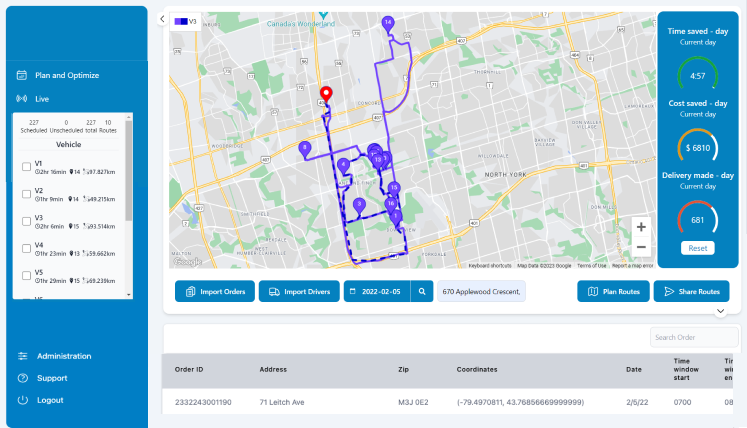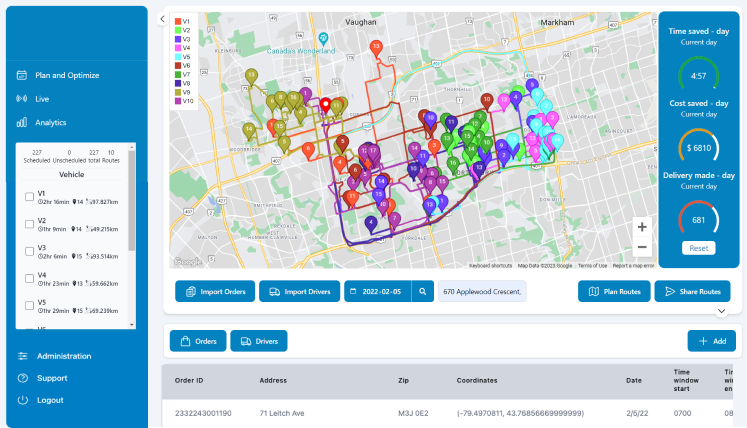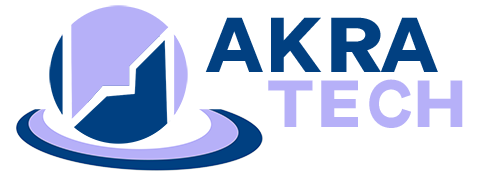FEATURES
Quantum-powered route optimization
Real-time tracking and monitoring
Multi-cluster customer location clustering
Time-constrained route optimization
Interactive visualization of delivery routes
Admin dashboard for route management
"AKRATECH was able to help my startup to build an MVP very quickly and they helped me to turn that into my first product which looks quite well. They have a group of professionals and they work with you to deliver the best result. I have been able to go to them for different front and back end designs, demos, and cloud maintenance. They work with you to build everything exactly as you want with high quality. I will continue working with them for the next phases of my product."

Aida Ahmadzadegan-Shapiro
Founder & CEO | ForeQast Technologies
TECHNOLOGY STACK
















Delivery routing Application
Revolutionizing Last-Mile Delivery: Our intelligent routing platform harnesses the power of quantum technology and real-world data to optimize delivery plans locally and at scale. With advanced algorithms and machine learning, we automate route optimization, identifying inefficiencies, mitigating risks, and enabling well-informed decisions. Experience enhanced efficiency and precision in delivery logistics with our cutting-edge solutions.
- Complex Delivery Network: The challenge was to develop a delivery routing application that could handle the intricacies of their network efficiently. The application needed to consider factors such as delivery time windows, traffic conditions, vehicle capacities, and specific customer requirements to generate optimized routes.
- Time-Sensitive Deliveries: The routing application had to be adaptable and responsive, constantly monitoring and analyzing real-time data to make quick route adjustments in case of traffic congestion, accidents, or delivery address changes. Ensuring timely and accurate updates to drivers and dispatchers was critical to maintaining operational efficiency.
- Cost Optimization: The challenge was to strike a balance between minimizing travel distances, reducing fuel consumption, and maximizing the utilization of available resources while meeting customer expectations and delivery deadlines.
- Data Integration: We integrated real-time data sources, including traffic information, weather conditions, customer preferences, and historical delivery patterns. This comprehensive data allowed us to create a dynamic and accurate representation of the delivery landscape.
- Quantum Computing Analysis: Leveraging the power of quantum computing, our platform analyzed the vast amount of data collected. Quantum algorithms were employed to calculate the most efficient routes, considering multiple variables simultaneously.
- Real-time Optimization: The platform continuously monitored the data streams and adjusted the routes in real time. This allowed for dynamic adjustments based on changes in traffic, weather conditions, or unexpected events.
- Cost Savings: Optimized routes reduced fuel consumption and vehicle wear and tear, resulting in significant cost savings for our Logistics.
- Faster Deliveries: The platform’s real-time optimization enabled faster deliveries by avoiding traffic congestion and taking advantage of alternative routes.
- Enhanced Customer Satisfaction: With faster and more efficient deliveries, our delivery routing Logistics improved customer satisfaction levels. Customers received accurate delivery estimates and experienced fewer delays.
- Scalability: The platform’s scalability allowed our application Logistics to handle increasing delivery volumes without compromising efficiency. The quantum technology utilized ensured that computational power could scale alongside the growing demands.
